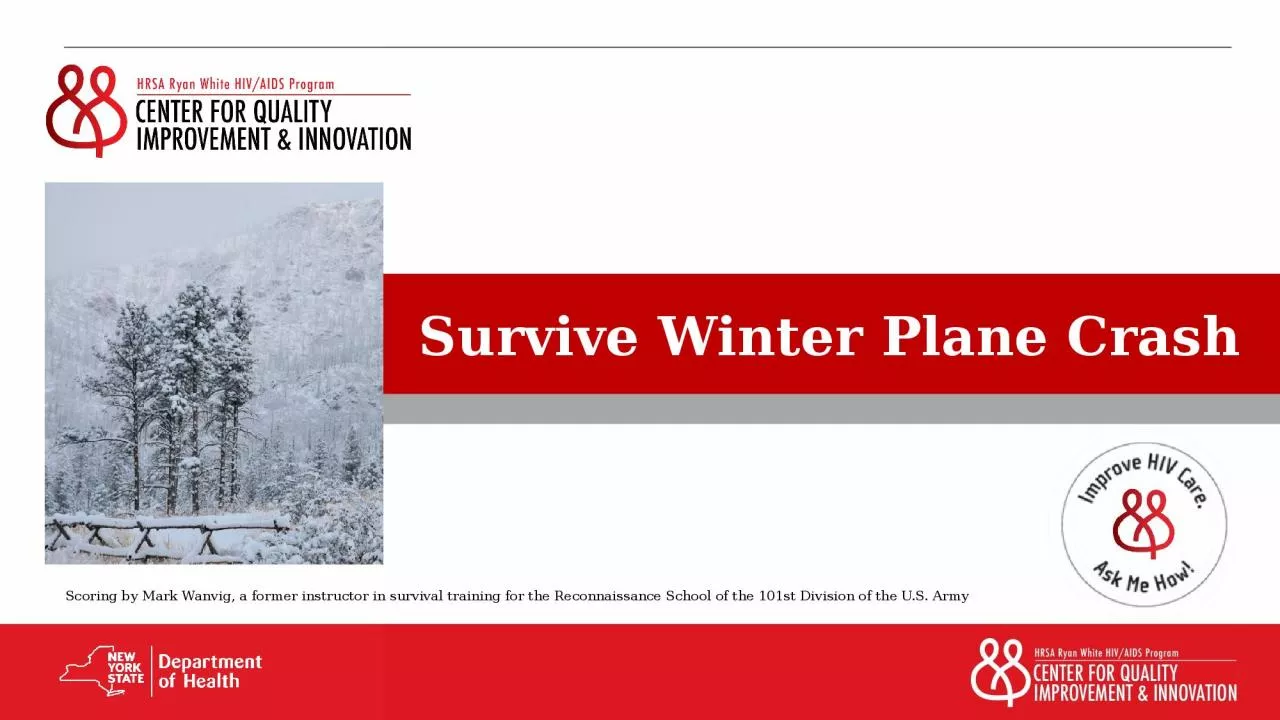PPT-Survive Winter Plane Crash
Author : emma | Published Date : 2024-02-09
Scoring by Mark Wanvig a former instructor in survival training for the Reconnaissance School of the 101st Division of the US Army Overview For more information
Presentation Embed Code
Download Presentation
Download Presentation The PPT/PDF document "Survive Winter Plane Crash" is the property of its rightful owner. Permission is granted to download and print the materials on this website for personal, non-commercial use only, and to display it on your personal computer provided you do not modify the materials and that you retain all copyright notices contained in the materials. By downloading content from our website, you accept the terms of this agreement.
Survive Winter Plane Crash: Transcript
Download Rules Of Document
"Survive Winter Plane Crash"The content belongs to its owner. You may download and print it for personal use, without modification, and keep all copyright notices. By downloading, you agree to these terms.
Related Documents














![[READ]-Fortran Crash Course + Hacking + Android Crash Course + Python Crash Course + XML](https://thumbs.docslides.com/972403/read-fortran-crash-course-hacking-android-crash-course-python-crash-course-xml-crash-course-hacking-xml-python-android-book-2.jpg)